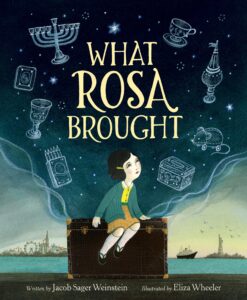Behind the ‘ROSA’ Art: Vienna Research
A behind-the-scenes look into the art-making process for ‘What Rosa Brought’
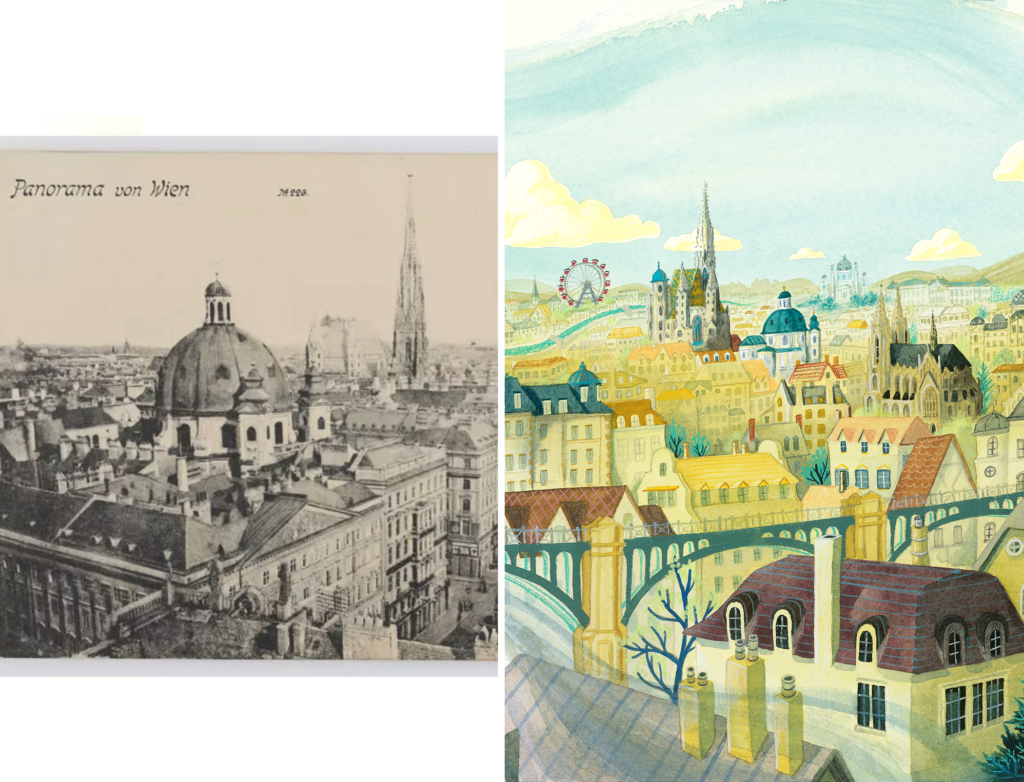
When it comes to illustrating a specific location and time period, I go a bit OTT in the research phase. ‘What Rosa Brought’ takes place in Vienna in 1938-1939, and I while I would have loved to have been able to travel there in person as I did for ‘John Ronald’s Dragons: Story of J.R.R. Tolkien’, it wasn’t possible logistically and financially to get to Vienna while working on this book, so I had to find alternate ways to do visual research.
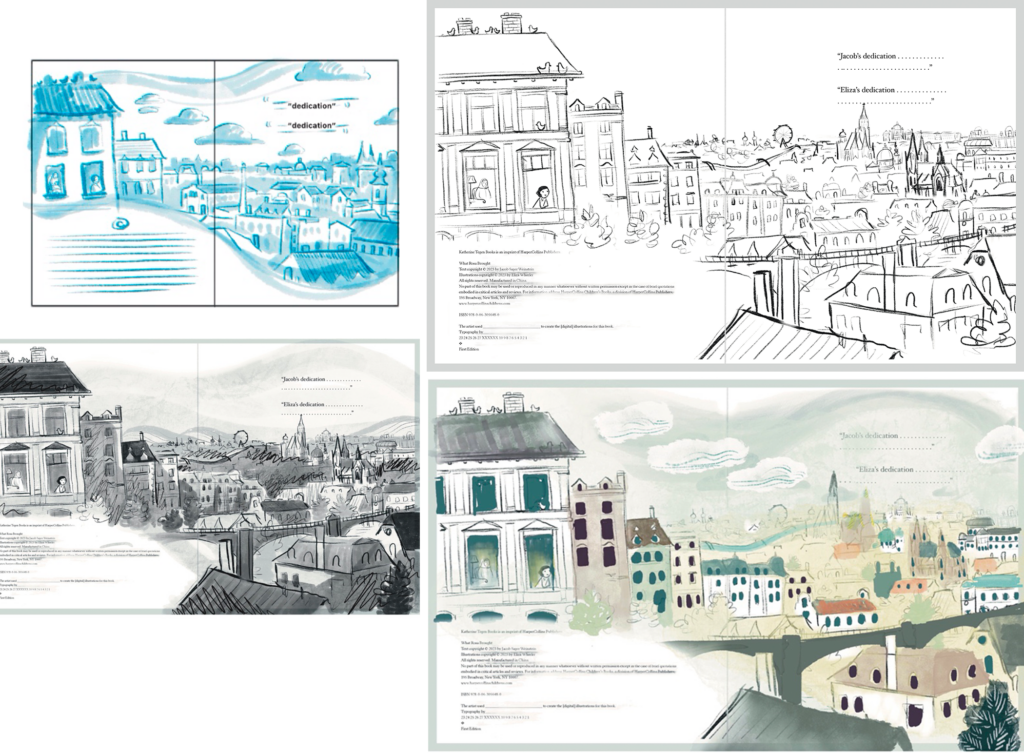
The art features many scenes around the city, most notably a wide view of Vienna in the opening pages. While it wasn’t important to make a super accurate pictorial representation, I wanted to do my best to include important landmarks and create an impression of Vienna that would feel recognizable to people who know the city well.
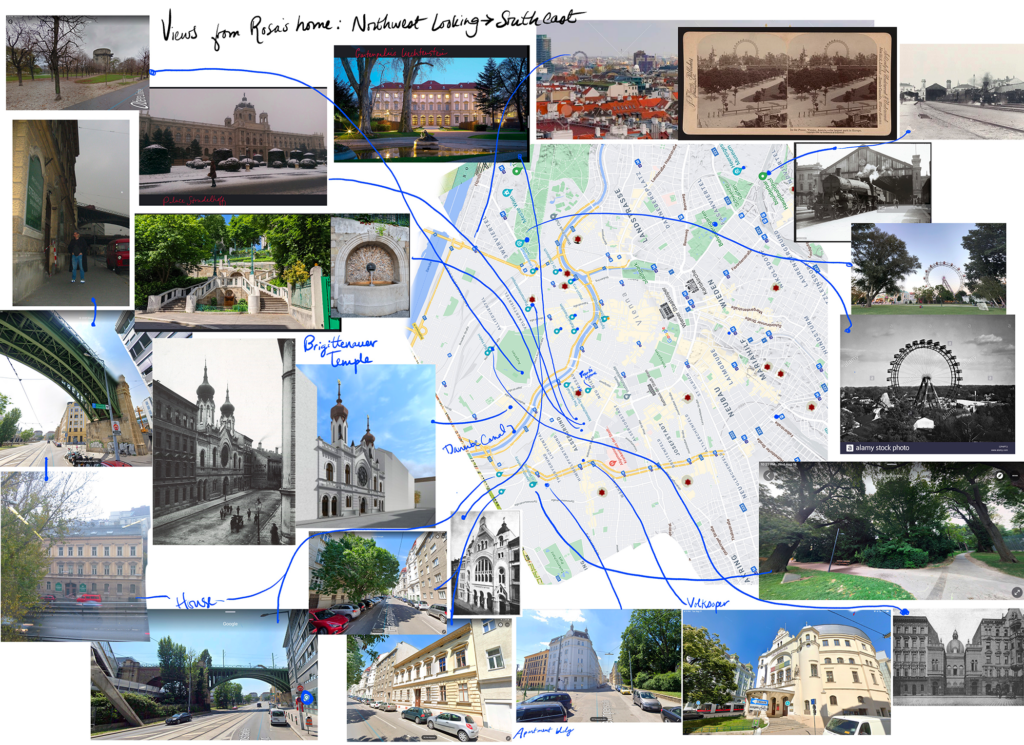
I began with mapping out locations from different vantage points and collecting photographs of key places around the characters’ neighborhood and the city.
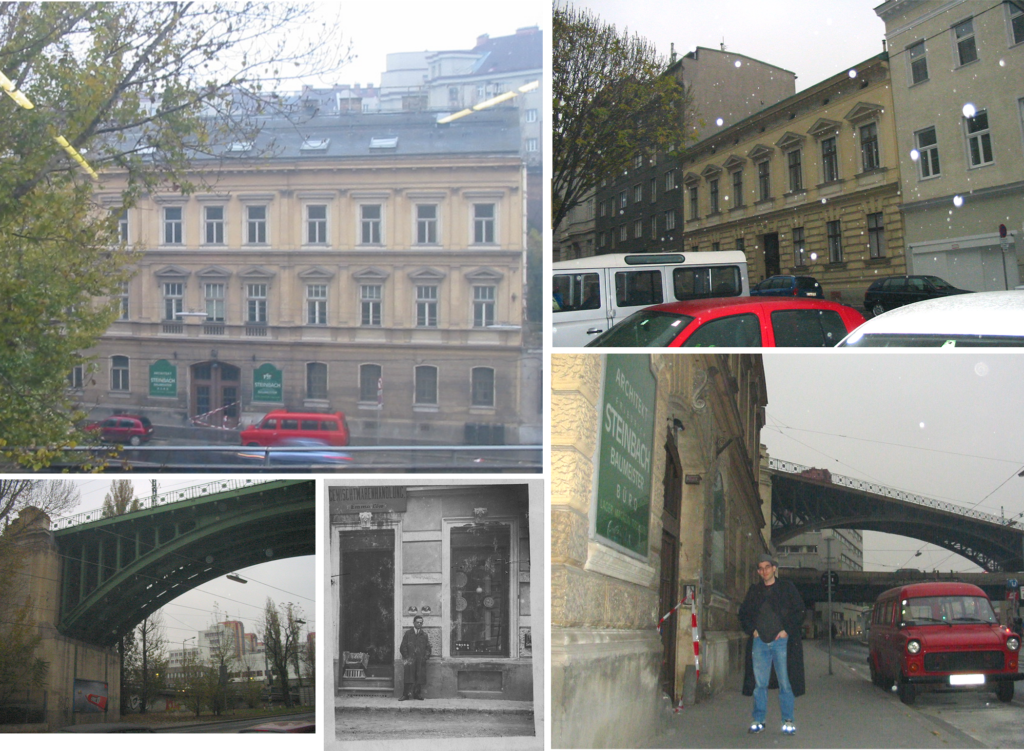
Thankfully, author Jacob Sager-Weinstein was able to share photos from a trip he’d taken to Vienna to see where his mother, grandparents, and great-grandparents lived and worked. As with many other landmarks, the family’s apartment building featured in the story isn’t currently there, but Jacob was luckily able to capture it shortly before it was torn down.
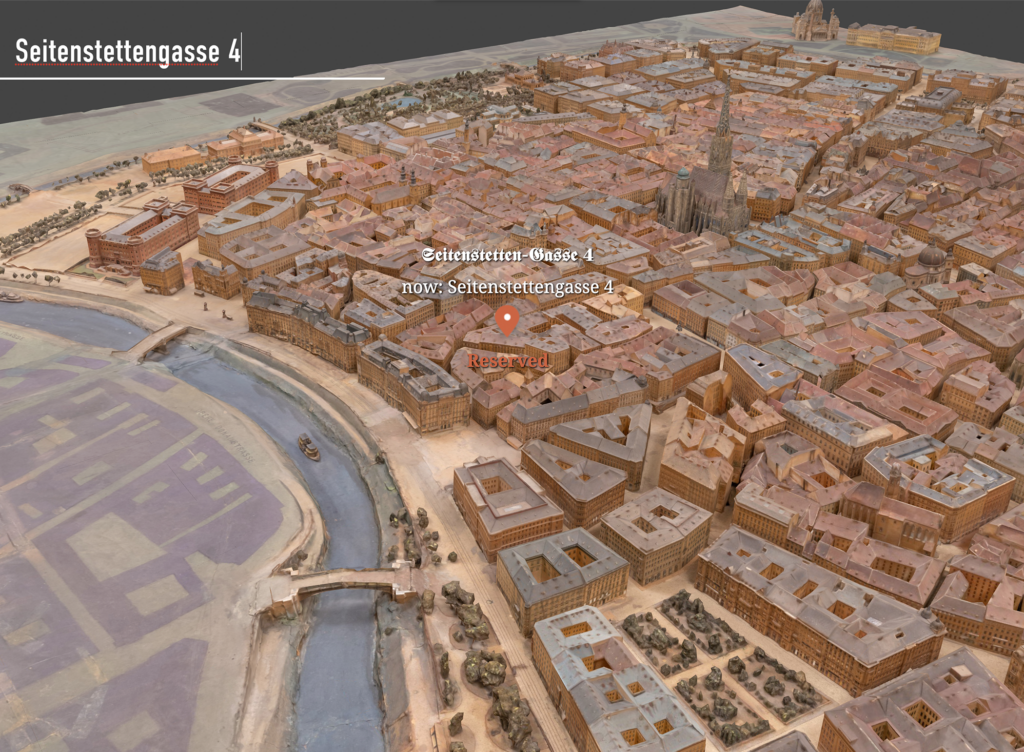
For this time and place, Vienna 1938-1939, the big challenge is how much the city has changed through the years, most notably through bombings in WW2 and also through the modernization of city roads and public transit. I needed my reference to be as much in the early 1900s as I could get, at the very least pre-WW2. Imagine my delight at finding that the Vienna History Museum has a model of the city dating to around 1900!
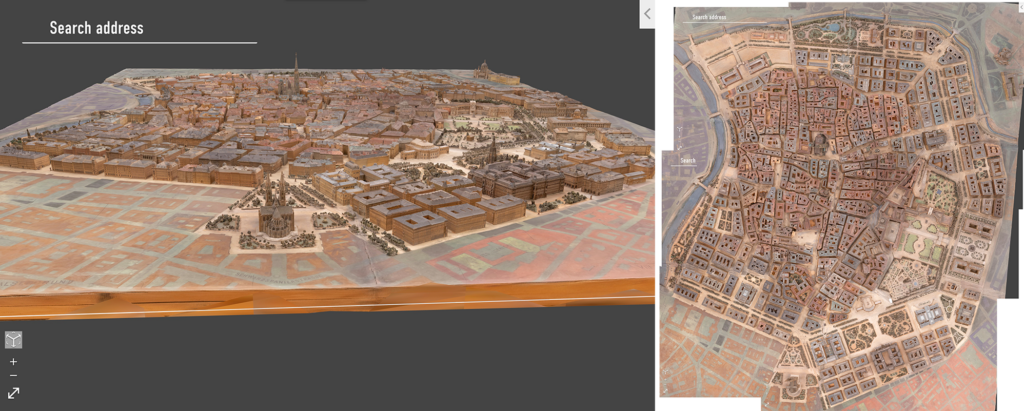
Not only that, but a digital 3D model was created so that–from my home in Minnesota–I could search for an address and move the model around to 360 degree views to see what it looked like from any vantage point. (A researching dream!)
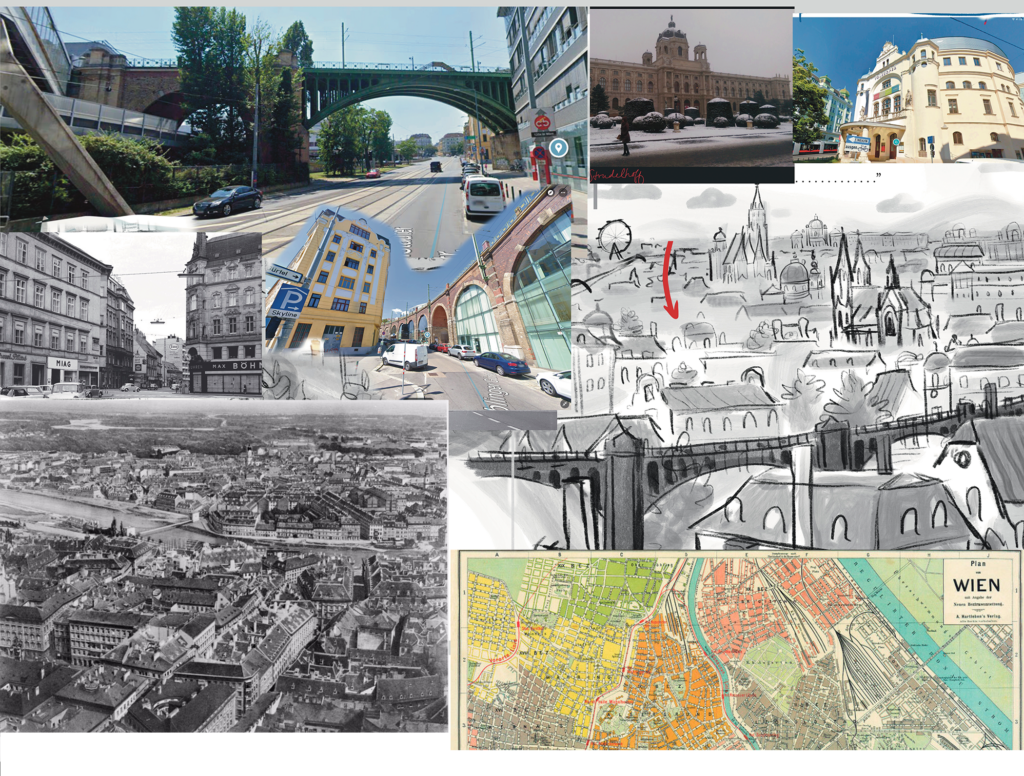
Using a hodge-podge of current views on Google Maps Street View, accurate time period maps, postcards and photographs, and that amazing 3D digital model, I was able to collage together images that, I hope, helped me captured the spirit of Rosa’s time and place.
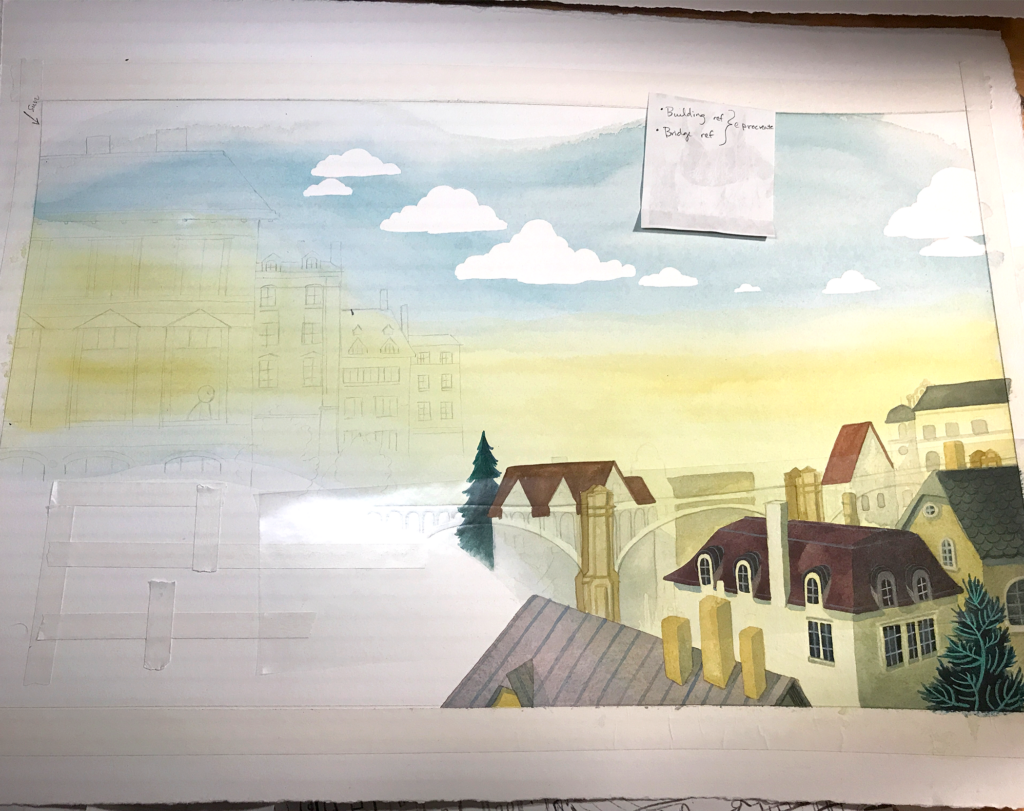
Here’s the final painting in early progress. (The shiny bit is frisket masking film, which I used to create masked shapes – here the block printed bridge color.)
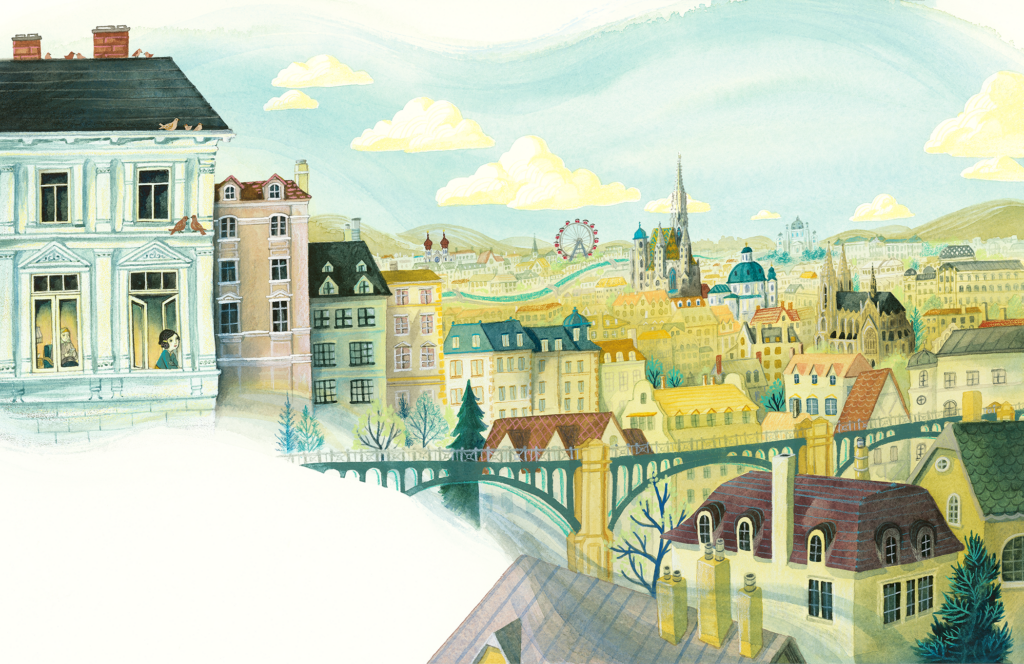
Final art!
If you go back to Jacob’s photos of the real building, you can see that I drew many of the architectural details, yet fudged the whole perspective and moved Rosa’s building up to a high vantage point for the sake of the composition here. (For historical picture books, that’s something I have to keep reminding myself it’s ok to do!). When it comes to non-essential details in illustrations, visual interest and visual storytelling trumps factual accuracy . . . which is something I love so much about art & illustration!
💛
(Materials used: M.Graham watercolors, India ink, colored pencils, block printing ink, Molotow acrylic paint pens, Caran’ache wax crayons, on Lanaquarelle 300lb paper)

Thanks for reading,

Share ‘WHAT ROSA BROUGHT‘ with your local school, library, or house of worship.
